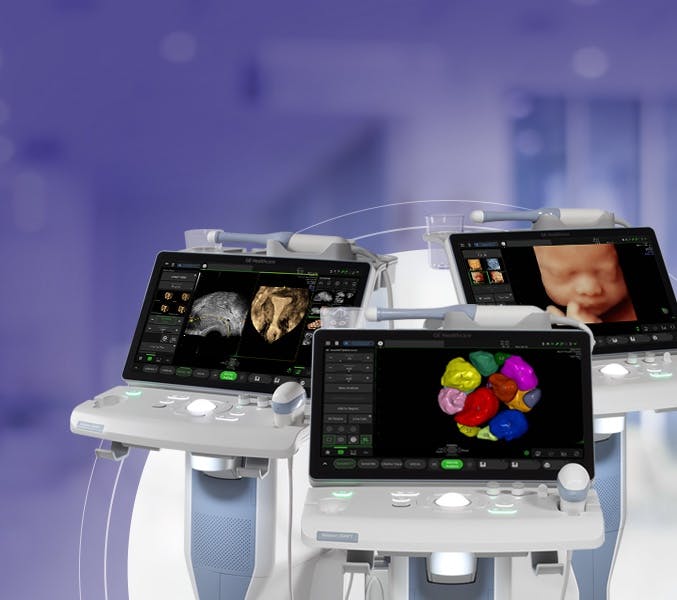More and more people across the globe are waiting until later ages to have children, especially in developed nations. In almost all of the 38 nations of the Organization for Economic Cooperation and Development (OECD), the average childbirth age is 30 years. The average fertility rates of people in their early 40s surpassed that of adolescents in recent years.
Most people who become pregnant in their 30s and even in their 40s have healthy births, but the risks associated with childbirth significantly increase at later ages. A high-risk pregnancy age is generally considered 35 years and older. That's when most medical societies advocate for more screenings and monitoring during pregnancy.
Although age-related declines in fertility and risks are well-known in the medical community, they may not be fully understood among patients. Both partners may not fully realize the links between age and pregnancy outcomes. They may overestimate the chances of getting pregnant at a later age and the success rates of assisted reproductive technology. It's important to talk with patients about their options and risks as early as possible so they can make informed decisions about childbearing.
High-Risk Pregnancy Conditions
Patients who wait until age 35 or later face an increased risk of complications for themselves and their babies. One reason is that as everyone ages, the risk of having a chronic condition — such as diabetes or high blood pressure — increases. Women who are 45 and older have a higher risk of gestational diabetes, gestational hypertension and preeclampsia/eclampsia, according to research in the Journal of Women's Health.
Other risks summarized in the research include:
- Ectopic pregnancy. Pregnant patients over age 35 have a four- to eight-fold higher risk of having an ectopic pregnancy.
- Miscarriage. Pregnant patients younger than 30 have about a 12% risk of miscarriage. There's a slight increase in risk between ages 30-34, but the risk rises higher for patients ages 40 and older. Patients who are age 45 or older have an estimated 93% risk of miscarriage.
- Cesarean delivery. Patients should not automatically be recommended to have a C-section just because of their age. However, the likelihood does increase slightly for those in their 30s and 40s and increases drastically to 61% for patients aged 50 and older, compared with 20% for patients younger than 34.
- Placental abruption and placenta previa. Patients over age 40 have an increased risk of these conditions compared to patients in their 20s.
- Down syndrome. Congenital malformations and gene and chromosomal abnormalities increase with the age of both partners. Down syndrome is the most common chromosomal abnormality that occurs with advanced age at pregnancy. This risk jumps from 1 in 1,480 pregnancies at age 20 to 1 in 353 at age 35 and 1 in 35 at age 45.
- Birth defects. Birth defects are rare and continue to be a small risk for all pregnancies, but being older during pregnancy does have an increased risk of having a fetus with a birth defect.
- Complications at delivery. Low birth weight, preterm delivery and stillbirths are all slightly increased for pregnant patients as their age increases.
It's also important to closely monitor patients after childbirth. All of your patients are at heightened risk of developing chronic conditions as they age, and these medical conditions can be influenced or exacerbated by pregnancy. Pregnancy-related morbidity and mortality risks increase with age, including blood clots, obstetric shock, amniotic fluid embolism and hemorrhage. As patients wait to have children, they also may be more likely to have them closer together, and shorter pregnancy intervals can increase the risk of stillbirth and preterm delivery.
Counseling Patients on Delaying Pregnancy
Patients have many reasons for delaying childbirth, and despite increased risks, most pregnancies are healthy. But it is important to make sure your patients are aware of their options and the risks for each. The American College of Obstetricians and Gynecologists recommends that all patients have a reproductive life plan. How you approach this with patients is crucial: Some young patients may bristle at the thought of being told to think about having kids, and older patients may feel some stigma about pregnancy at their age.
It's never too early or too late for your patients to weigh these decisions. Help them understand that the longer they wait to have kids, the more the risk of complications increases. Let them know what is considered a high-risk pregnancy age, but note that it is just a guideline. Not everyone responds the same way to pregnancy at every age.
If delaying childbirth is best for your patient, counsel them on how to maintain a healthy lifestyle to avoid developing chronic conditions that can complicate pregnancy. For those who are already older, be sure they understand lifestyle habits they can implement to improve their chances of conceiving and having a healthy pregnancy.
Advise patients who may have high-risk pregnancy complications of appropriate screening tests, additional ultrasounds or consultations with maternal fetal medicine specialists that may be needed. Remain supportive and honest, but temper the truth with reassurance.
Overall, patients at a high-risk pregnancy age can still have a healthy childbirth. It's important for the patient, their partner and the care team to know the patient's individual risks and what mitigating steps can be taken. More and more people are choosing to delay childbirth; it's a trend that's likely to continue. Both older and younger patients may need more education about what to expect as they wait.



